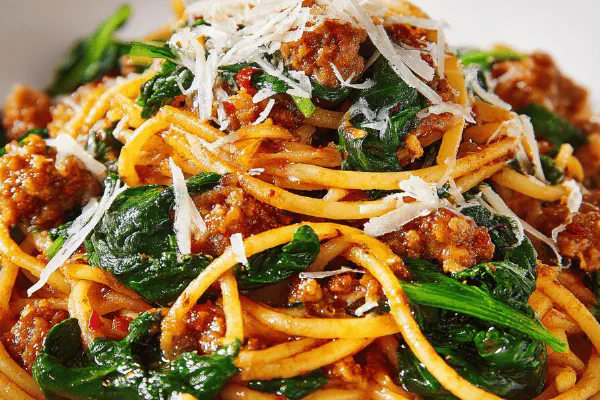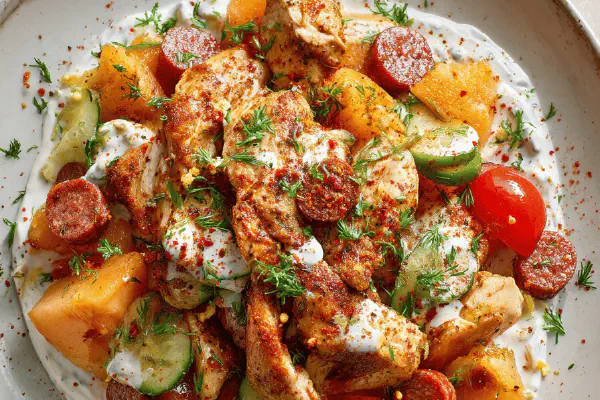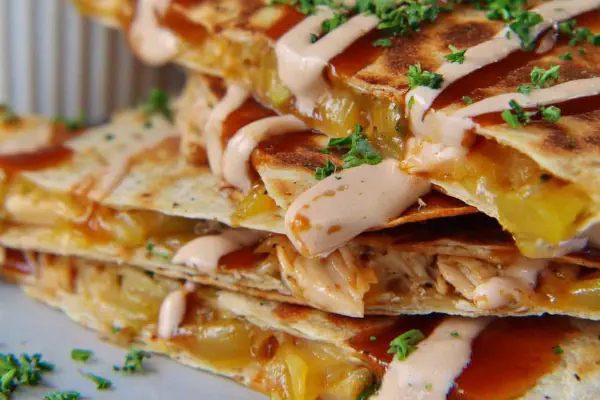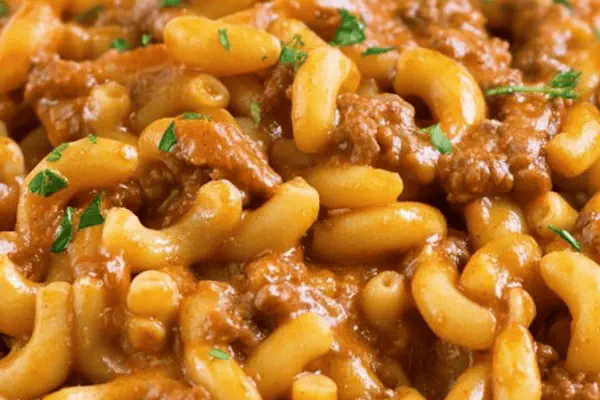Sheet Pan Citrus Chicken
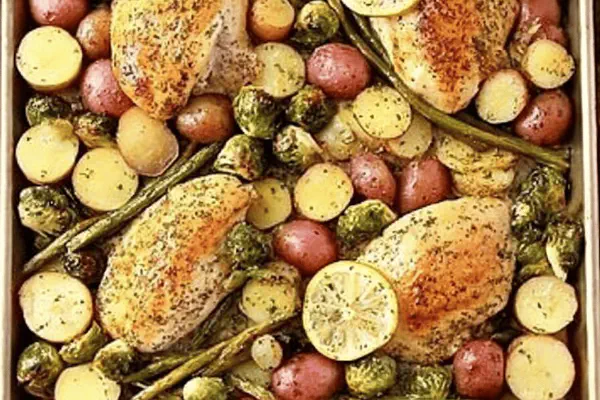
E
By Emma
Certified Culinary Professional
•
Recipe tested & approved
Roasting chicken breasts with potatoes and green beans coated in a lemon-honey mustard glaze. Olive oil provides richness while garlic adds punch. Simple toss and bake—no fuss. Crispy edges on the veggies signal readiness. Tender chicken with tangy finish. A splash of zest brightens at the end. A practical weeknight fix with subtle sweetness and sharp acidity balanced on one pan.
Prep:
14 min
Cook:
27 min
Total:
41 min
Servings:
4 servings
#one pot meals
#sheet pan dinners
#chicken recipes
#weeknight meals
#easy dinners
Ever danced around weeknight dinners hunting fast flavor and little fuss? This one hits those notes—roasting everything on one sheet with a quick glaze that sticks and sings. Tried skipping mustard once—lost punch, flat plate. Citrus cuts the richness; honey lifts the browned edges to sweet whispers. Hands down best when potatoes blister, green beans keep snap-not-soggy texture. Timing shifts a bit—sometimes I nudge the heat higher, coax aroma; other times hover low, coax juicy chicken finish. The fresh lemon drizzle finale? Mandatory. It wakes up the dish, clean and bright. One pan, one moment—work smarter, and quit babysitting the stove.
Ingredients
- 3/4 cup baby potatoes halved
- 1 1/2 cups fresh green beans trimmed
- 2 boneless skinless chicken breasts
- Juice of 1 large lemon divided
- 1 1/2 teaspoons Dijon mustard
- 1 large garlic clove minced
- 1 1/2 teaspoons honey
- 1/4 teaspoon salt divided
- 4 tablespoons olive oil divided
- Freshly ground black pepper to taste
About the ingredients
Baby potatoes are forgiving but halve or quarter evenly for uniform cooking—small bites crisp fast, large chunks steam. Green beans in place of Brussels—personal tweak for a cleaner snap and less bitter battle. Dijon mustard essential here; that sharpness lifts the honey’s sticky sweetness. Swapped regular mustard for spicy brown once—too aggressive in this blend, muddying bright citrus. Garlic minced fine to float evenly in the glaze, larger chunks scorch easily. Olive oil can swap avocado or grapeseed oil, especially if you want neutral fats. Salt split into two helps layering flavor at different stages, preventing flat overall seasoning. Lemon juice divided—first mix bonds flavors, last pour wakes senses, contrast matters.
Method
- Preheat oven to 410°F. Spray rimmed baking sheet lightly with nonstick spray or brush with oil. Whisper of heat, that initial sizzle when oil hits pan—watch that.
- Mix half the lemon juice, mustard, garlic, honey, 1/8 tsp salt, and 2 tbsp oil in small bowl. Blend until glossy, tangy and lightly textured.
- Toss potatoes and green beans on pan. Drizzle 2 tbsp olive oil plus about half the lemon-mustard sauce. Salt and pepper generous. Toss until slick, shiny. Spread evenly. Aim for single layer—crowding steams, no crisping.
- Season chicken breasts with salt and pepper both sides — don’t skip. Place among veggies. Drizzle remaining lemon-mustard over chicken until coated but not puddled.
- Bake about 28–30 minutes. Potato edges blister, a few browned spots on green beans. Chicken touches 165°F or juices run clear when pierced. If veggies cook too fast, tent chicken with foil. For extra caramelization, broil last 2 minutes — careful, watch closely.
- Remove pan. Splash remaining lemon juice over entire pan—bright scent bursts out, crisp tang cuts richness.
- Let rest a few minutes. Juices redistribute, potatoes settle into tender crusty bits. Chicken still warm, moist but firm. Serve straight off pan; rustic and no muss.
Cooking tips
Starting hot ensures potatoes get that crust without drying out the chicken—pan temp impacts final texture dramatically. Tossing veggies before chicken placement avoids overcrowding and steaming—a rookie error I made twice before learning. Spreading ingredients out on pan—thin single layer, no overlaps—encourages even cooking and crisp edges. Watch the color shift in potatoes and snap in green beans to track doneness, never trust time alone. Chicken done when firm but still yielding to finger press, juices clear; overcooked dries out faster than you think here. Drizzling remaining lemon juice off-oven brightens the whole dish—don’t skip! Resting chicken on-pan absorbs final flavors and settles internal juices, prevents floppy texture. For tight kitchens, prep marinade first while oven preheats—multitasking that saves minutes and sanity.
Chef's notes
- 💡 Preheat oven fully at 410°F. Hot pan critical for crispy potatoes. Toss veggies thin single layer. Crowding? Steam, no crisp. Pan temp impacts texture hardcore. Toss coated veg right before baking. Avoid soggy edges.
- 💡 Divide salt into two parts. One mixes in sauce, layers flavor early. Second salts chicken and veg straight on pan. Prevents flatness. Try splitting olive oil too. Use half in glaze, rest to toss veggies. Provides slick, shines, not oily patchwork.
- 💡 Watch chicken doneness by feel not time. Firm but slight give. Juices clear once pierced with knife/tip. Overcooked dries fast. Tent foil if veggies brown before chicken done. Rest chicken few mins on pan. Juices settle tight, prevents floppy meat.
- 💡 Sub avocado or grapeseed oil if olive oil’s heavy. Flavors neutral, works well with glaze. Dijon mustard mandatory; sharp bite cuts honey’s sweetness. If swapped spicy brown mustard, glaze muddied bright notes. Garlic minced fine solid for even flavor diffusion. Big chunks scorch quick.
- 💡 Final lemon juice splash right off oven wakes up dish. Bright citrus scent, cuts richness from oil, honey. Don’t skip. Potatoes blister and brown edges signal almost ready. Green beans snap-test after 25 min; check for tender crunch. Broil last 2 mins for caramelization but watch closely.
Common questions
How do I know chicken is done?
Press breast with finger. Firm but still bounces back. Juices clear, no pink. Thermometer hits 165°F safe. Watch closely, oven temps vary. Tent foil if cooking too long.
Can I swap green beans?
Brussels work, but heavier, longer cook time. Snap changes texture. Snap beans fast, bitter notes less. If using Brussels, quarter small chunks. Adjust cooking down thickness.
Potato edges soggy what went wrong?
Crowding biggest culprit. Potatoes need space to crisp. Toss often with oil before baking. Hot pan helps. Try thinner potato pieces if slow crisping. Oven temp too low kills crisp edges.
How store leftovers best?
Cool quick, airtight container fridge few days. Reheat oven or air fryer for crisp texture. Microwave softens. Lemon drizzle can be added fresh after reheat to retain brightness.
